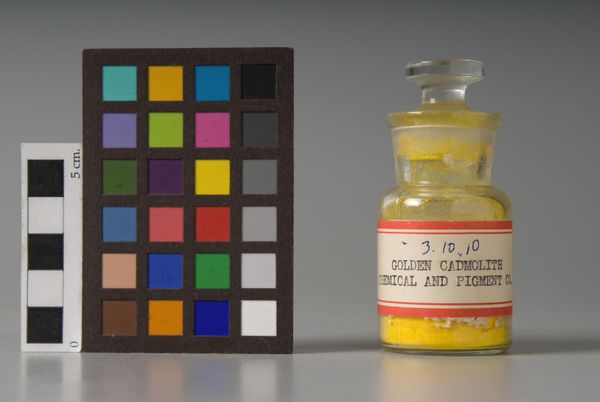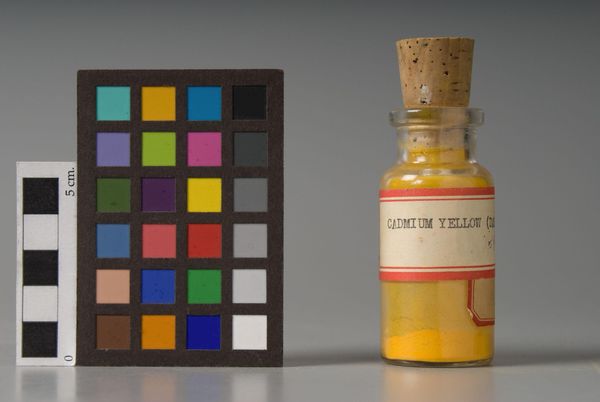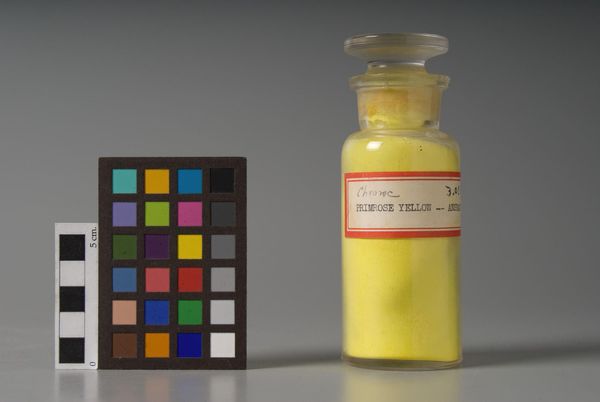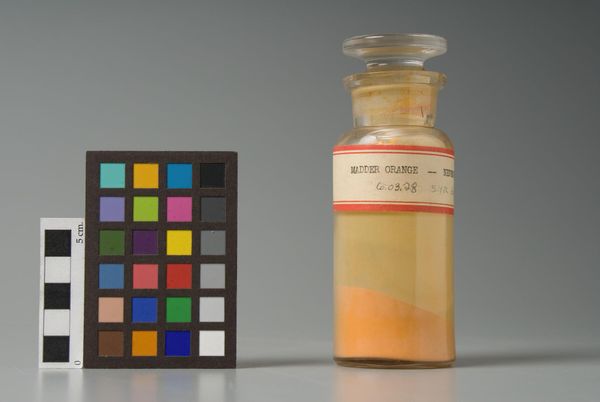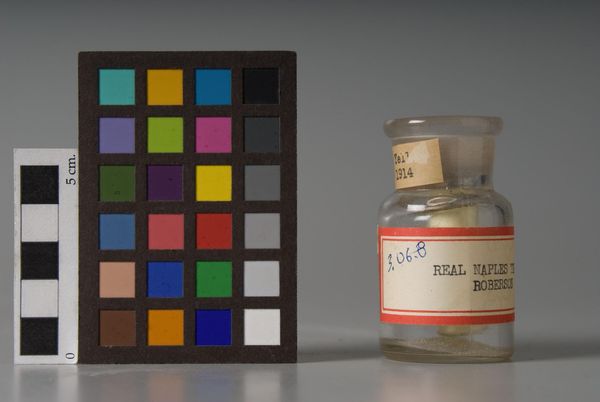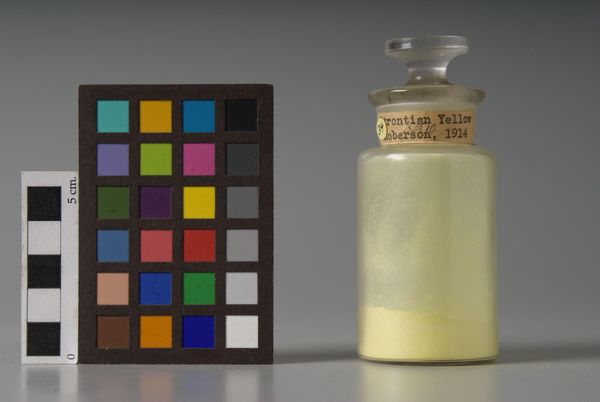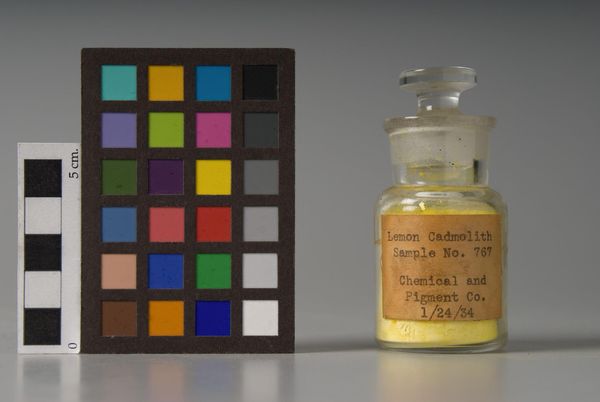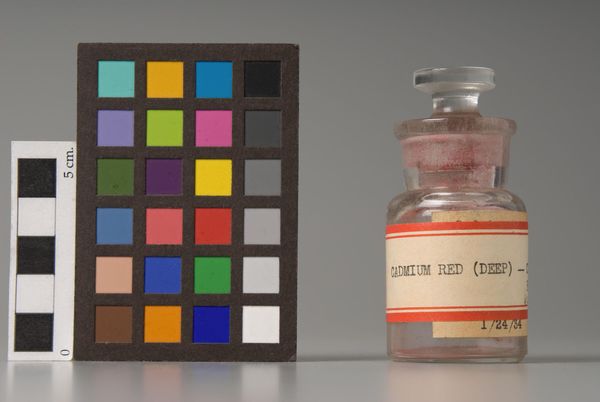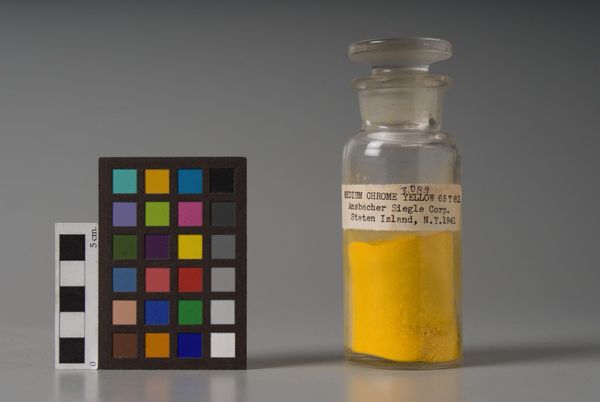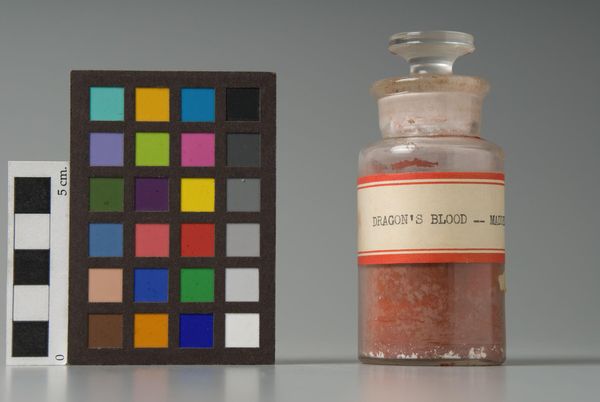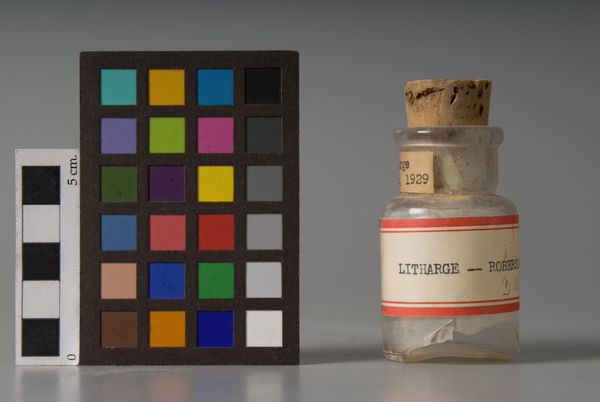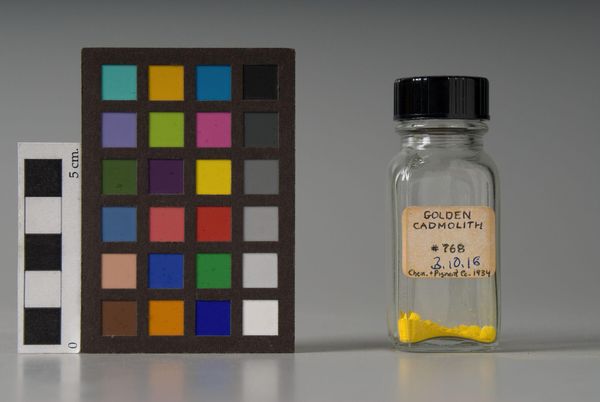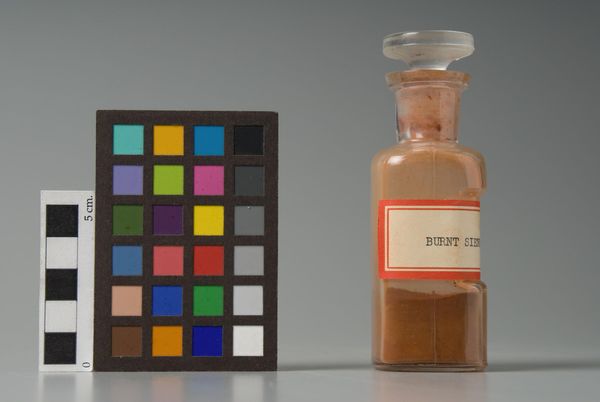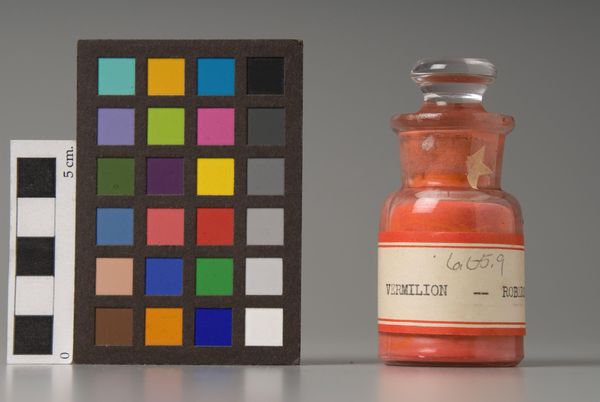
Cadmium Yellow (pale)
Copyright: CC0 1.0
Curator: Here we have "Cadmium Yellow (pale)", manufactured by Beaverhall. It’s a pigment sample, presented alongside a color chart. Editor: It’s quite striking, actually. That concentrated yellow is such a contrast with the muted tones in the chart. It feels almost… radioactive. Curator: Cadmium Yellow's development and accessibility in the 19th century had a profound impact, especially concerning labor conditions in the mines and factories where cadmium was extracted and processed, revealing inequalities in material culture. Editor: Absolutely, the means of production here are really important. This pigment represents a whole network of labor and resources. It also highlights the shift toward commercially produced artist materials, changing how artists worked. Curator: Indeed, understanding these power dynamics shapes how we interpret art history. The availability of this pigment influenced artistic expression, potentially impacting movements and their visual languages. Editor: And thinking about its physical properties, cadmium is so lightfast and opaque. No wonder artists were drawn to it! It’s a really impactful addition to any palette. Curator: The historical implications of its manufacture and the sociopolitical contexts intertwined in this pigment are worth contemplating. Editor: It makes you appreciate the layers of context embedded in even the simplest of materials.
Comments
No comments
Be the first to comment and join the conversation on the ultimate creative platform.
